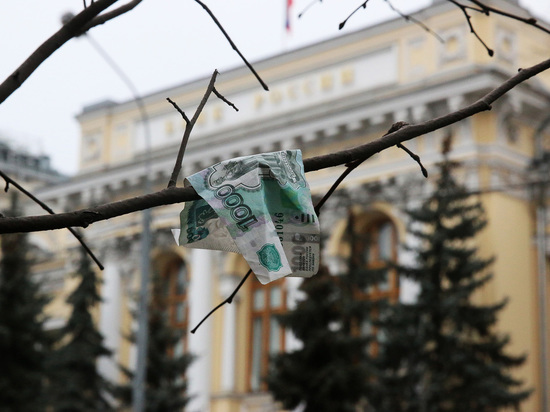In December, the ruble is waiting for the turbulent events of December: economists gave a forecast
[ad_1]

December will be rich in geo-economic and political events that can affect the exchange rate of the Russian national currency. Thus, an OPEC+ meeting is scheduled for December 4, at which, as analysts expect, a number of important decisions will be made to balance hydrocarbon prices. The next day, December 5, a ban on sea transportation of Russian oil will come into force. On the same day, the West plans to introduce a “price ceiling” for raw materials from our country.
The final meeting of the Board of Directors of the Bank of Russia, which will decide on the key rate, will be held on December 16. What to expect in this regard from the ruble, experts told MK.
In recent months, the ruble has pleased Russians with absolutely unbreakable stability, practically not leaving the range of 60-62 per dollar and euro. In this regard, some of the inhabitants, discussing the future of the ruble on forums in social networks, believe that “the authorities will definitely lower it by the end of the year.” It is no coincidence that government representatives have repeatedly stated that a more “comfortable” level for the country’s economy is 70 per dollar.
Such a course is more in line with the interests of the budget, which will obviously be in deficit this year. With a cheap ruble, holes in the treasury are more easily plugged when export earnings go there. Another part of the interested public believes that no one will “lower” the ruble until the end of the year, so as not to irritate the population once again, which already has enough reasons for unrest against the background of the special operation.
Professional analysts, first of all, pay attention to those events and factors that are really capable of influencing the exchange rate in the coming months.
“The OPEC+ meeting will take place on December 4,” says BitRiver financial analyst Vladislav Antonov. — Given that the price has fallen to $82-83 per barrel, the alliance may cut oil production quotas to keep the cost of a barrel above $90. This is also a positive factor for the ruble.” Since the beginning of the year, the Russian currency has strengthened against the dollar by almost 20%. Behind the strengthening of the ruble is the effective work of the Russian monetary authorities, the expert believes. In addition, in his opinion, a positive balance of payments and sales of foreign exchange earnings will continue to provide significant support to the ruble in December.
There is a high probability that the “price ceiling” on Russian oil, which the West introduces from December 5, will have an impact on the rate. But what exactly, here the opinions of experts differed.
“There is no ban on the supply of oil, it is possible to impose a certain “ceiling on the price” of oil against Russia,” says Yulia Kuznetsova, a member of the Expert Council for the Protection of the Rights of Retail Investors. “In theory, the ruble should weaken and we can see the exchange rate up to 68-70 rubles per dollar, and possibly even higher, if we accept this fact of oil pricing policy.”
Artem Tuzov, Executive Director of the Capital Market Department of IVA Partners Investment Company, for his part, believes that this measure has been discussed for several months, so the market already takes this event into account in exchange rates.
Most of the experts interviewed by MK believe that the Bank of Russia will leave the key rate unchanged at its meeting on December 16, so it will not be able to influence such a decision on the ruble exchange rate even in the short term. “In December, I do not expect any sharp changes in the exchange rate of the national currency,” says Alexander Razuvaev, a member of the Supervisory Board of the Guild of Financial Analysts and Risk Managers. — The Bank of Russia will leave the key rate at 7.5%. Most likely, the ruble may slightly weaken against all major currency pairs. Traditionally, government spending increases in December and this becomes a factor in the depreciation of the national currency.”
Earlier in December, the ruble exchange rate was also affected by an increase in demand from the population in connection with the planned New Year trips abroad and, accordingly, interest in the currency increased. But this time, for obvious reasons, the influence of this factor will be reduced, the analyst is sure.
The possible introduction of an embargo on the supply of Russian hydrocarbons will still be a negative event for the ruble, although not critical oil embargo next month. A more serious devaluation seems to be carried over to next year, where the fall of the ruble will be much more serious, since the budgeted $70 per barrel of Urals looks like something unattainable when you look at the current oil market conditions.
The key rate this year has no effect on the ruble, since all strong movements in the Russian foreign exchange market are subsequently corrected by the Central Bank itself, which, after the exodus of non-residents (foreign investors), remained the only major player in this market.
“The Bank of Russia will reduce the ruble when there is an urgent need for this, which is likely to happen as early as the beginning of next year,” predicts Krichevsky. The problem is that in a few weeks to lower the national currency rate, for example, to 65 rubles per dollar, and then to 70 rubles per unit of US currency, the Central Bank does not really have, the expert is sure.
[ad_2]
Source link






